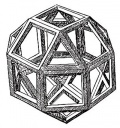Germanic languages
From The Art and Popular Culture Encyclopedia
(Redirected from North Germanic languages)
|
Related e |
|
Featured: |
The Germanic languages are a group of related languages that constitute a branch of the Indo-European (IE) language family. The common ancestor of all the languages in this branch is Proto-Germanic, spoken in approximately the mid-1st millennium BC in Iron Age northern Europe. Proto-Germanic, along with all of its descendants, is characterized by a number of unique linguistic features, most famously the consonant change known as Grimm's law. Early varieties of Germanic enter history with the Germanic peoples settled in northern Europe along the borders of the Roman Empire in the second century BC.
The most widely spoken Germanic languages are English and German.
[edit]
See also
- Language families and languages
- Non-Indo-European roots of Germanic languages
- List of Germanic and Latinate equivalents
- Germanisation and Anglicisation
- Germanic name
- Germanic verb and its various subordinated articles
- Germanic placename etymology
- German name
- German placename etymology
- Isogloss
- Germanic substrate hypothesis
Unless indicated otherwise, the text in this article is either based on Wikipedia article "Germanic languages" or another language Wikipedia page thereof used under the terms of the GNU Free Documentation License; or on research by Jahsonic and friends. See Art and Popular Culture's copyright notice.

